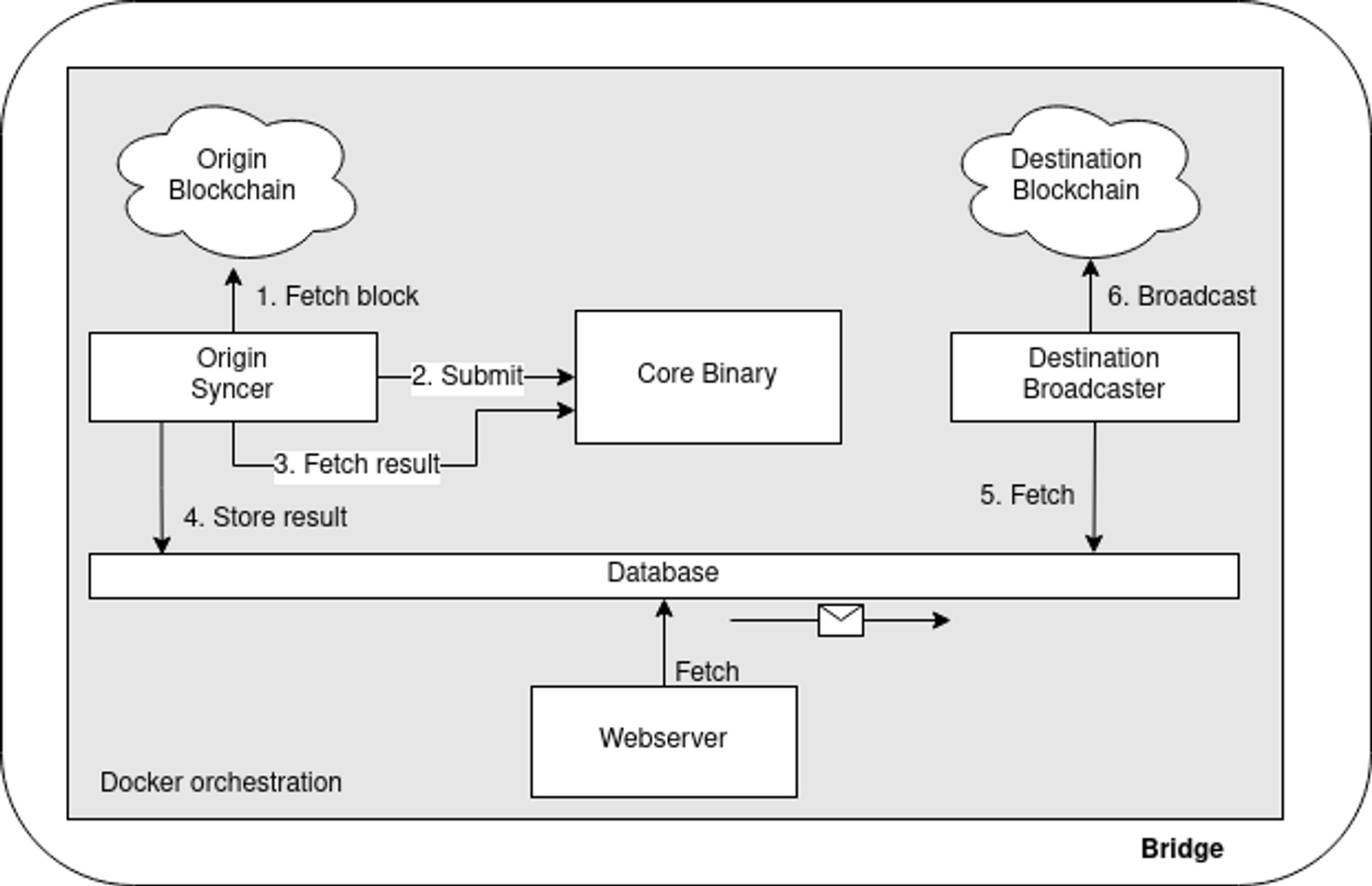A pNetwork bridge is composed of the following components:
- Broadcasters which broadcast detected transactions to the destination chain
- Syncers fetching blocks from the originating and destination chains and submitting them to the core binary
- Webserver exposing all the bridge operations to the Internet through an API
- A core binary running in a TEE, acting as light-clients for both blockchains. It accepts and validates the latest submitted blocks for each chain and returns the relative signed transactions that issue or redeem the asset on the relevant chain
In order to understand the architecture of pNetwork v2, let’s spend few words on the architecture of pNetwork v1:

The overall flow consists in the following steps:
- The origin syncer fetches blocks from the originating blockchain and it submits them in order to the core binary
- If the core binary detects a transaction inside a valid block and then it returns a signed transaction with the correct amount, executable on the chain of destination
- The resulting signed transaction is stored along other important information into a database
- The broadcaster fetches the new signed transactions from the database and broadcasts them to the destination blockchain
Having in mind how a bridge v1 works makes our understanding easier for the architecture of a pNetwork v2 bridge, shown in the diagram below:
.png?table=block&id=1c2357d2-f2d2-41fb-8b41-0d3e529782ce&cache=v2)
This architecture involves new important entities
- A routing chain which enables crosschains transfers for a given asset
- A new webserver aggregating the results from the two bridges API
